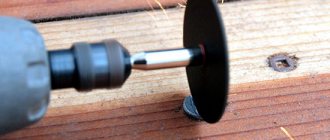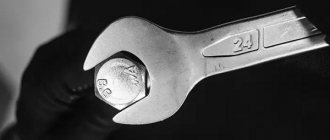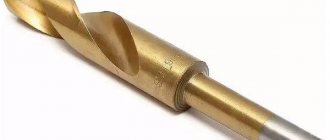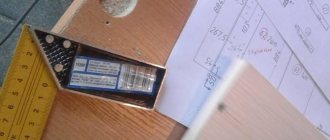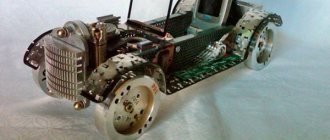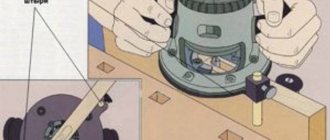1. MAIN PARAMETERS AND DIMENSIONS
1. MAIN PARAMETERS AND DIMENSIONS
1.1. The design and main dimensions of the eye bolts must correspond to those indicated in the drawing and in Table 1.
Table 1
Dimensions in mm
| Thread symbol | Applicability | , no less | Weight 1 piece, kg | |||||||||
| M8 | 36 | 20 | 8 | 20 | 10 | 12 | 6 | 18 | 12 | 2 | 4 | 0,05 |
| M10 | 45 | 25 | 10 | 25 | 12 | 16 | 8 | 21 | 15 | 0,12 | ||
| M12 | 54 | 30 | 12 | 30 | 14 | 18 | 10 | 25 | 19 | 6 | 0,19 | |
| M16 | 63 | 35 | 14 | 36 | 16 | 20 | 12 | 32 | 25 | 0,31 | ||
| M20 | 72 | 40 | 16 | 40 | 19 | 24 | 14 | 38 | 29 | 3 | 8 | 0,50 |
| M24 | 90 | 50 | 20 | 50 | 24 | 29 | 16 | 45 | 35 | 12 | 0,87 | |
| M30 | 108 | 60 | 24 | 63 | 28 | 37 | 18 | 55 | 44 | 15 | 1,58 | |
| M36 | 126 | 70 | 28 | 75 | 32 | 43 | 22 | 63 | 51 | 4 | 18 | 2,43 |
| M42 | 144 | 80 | 32 | 85 | 38 | 50 | 25 | 72 | 58 | 20 | 3,72 | |
| M48 | 162 | 90 | 36 | 95 | 42 | 52 | 30 | 82 | 68 | 22 | 5,54 | |
| M56 | 180 | 100 | 40 | 105 | 48 | 60 | 34 | 95 | 78 | 5 | 25 | 8,09 |
| M64 | 198 | 110 | 44 | 115 | 52 | 65 | 40 | 110 | 93 | 10,95 | ||
| M72x6 | 234 | 130 | 52 | 135 | 62 | 75 | 45 | 115 | 98 | 35 | 18,54 | |
| M80x6 | 270 | 150 | 60 | 160 | 70 | 88 | 50 | 125 | 108 | 25,40 | ||
| M100x6 | 324 | 180 | 72 | 190 | 85 | 105 | 60 | 150 | 133 | 40 | 43,82 |
An example of a symbol for an eyebolt with M8 thread without coating:
Eye bolt M8
GOST 4751-73
The same, with fine thread M100x6, with coating 01 (zinc with chromating), thickness 9 microns:
Eye bolt M 100 x 6.019
GOST 4751-73
(Changed edition, Amendment No. 1, 2).
1.2. The lifting capacity of the eye bolts must correspond to those indicated in Table 2.
table 2
| Thread symbol | Load capacity per 1 eye bolt, kg, + | ||
| when directing the slings | |||
| along the vertical axis of the eye bolt | at an angle of 45° from the vertical axis of the eye bolt | ||
| in the plane of the ring | with deviation from the plane of the ring | ||
| M8 | 120 | 80 | 40 |
| M10 | 200 | 125 | 65 |
| M12 | 300 | 175 | 90 |
| M16 | 550 | 250 | 125 |
| M20 | 850 | 325 | 150 |
| M24 | 1250 | 500 | 250 |
| M30 | 2000 | 700 | 350 |
| M36 | 3000 | 1000 | 500 |
| M42 | 4000 | 1300 | 650 |
| M48 | 5000 | 1650 | 800 |
| M56 | 6200 | 2000 | 1000 |
| M64 | 7500 | 2500 | 1250 |
| M72x6 | 10000 | 3500 | 1750 |
| M80x6 | 14000 | 4500 | 2250 |
| M100x6 | 20000 | 6500 | 3250 |
Notes:
1. When lifting a load, the direction of the slings at an angle from the vertical axis of the eyebolt of more than 45° is not allowed.
2. To install in the same plane the rings of two eyebolts screwed in until they stop, it is allowed to use flat washers with a thickness of:
— up to 1 mm — for eye bolts with M8-M12 threads;
- no more than half the thread pitch - for eye bolts with threads over M12.
1.3. The design and dimensions of the sockets for eye bolts are given in the Appendix.
How are eye bolts made?
They are produced either by stamping or casting. The material used is high quality carbon or alloy steel, but there are products made from low carbon steel. The latter must be galvanized without fail, which protects them from corrosion. This is quite important since they are usually used outdoors. Galvanization is done in four ways:
- Cold, where a solution is applied to already finished products. The simplest way, corrosion protection is good, but not the best.
- Galvanic is a more complex method in which finished products are placed in containers with a solution of zinc salts, after which they are exposed to electricity and galvanizing occurs.
- Diffuse, in which eye bolts are most often treated with zinc vapor at high temperatures. The result is good protection against corrosion, although such products do not look very good, but in this case few people care.
- Hot, which is the most common because it is simple and gives the most optimal option. The finished eyebolts are placed in zinc, the temperature of which is about 460 degrees Celsius.
2. TECHNICAL REQUIREMENTS
2.1. Eye bolts must be made of steel grade 20 or 25 (subgroup a) according to GOST 1050 by stamping. Production by forging is allowed.
Compliance of the material with the prescribed grades must be confirmed by a certificate from the metal manufacturer.
(Changed edition, Amendment No. 1).
2.2. (Deleted, Amendment No. 1).
2.3. Technical requirements for stamped forgings in accordance with GOST 7505, accuracy class - II, degree of complexity - C3.
Note. When producing eye bolts by free forging in backing dies, it is allowed to increase the plus tolerances by 2 times.
(Changed edition, Amendment No. 1).
2.4. A flat on the inner circumference of the ring is allowed, resulting from deburring, provided that the size is maintained within the tolerances of clause 2.3.
2.5. Welding or sealing of defects is not allowed.
2.6. Eye bolts after stamping or forging must be normalized and free of scale.
2.7. The hardness of normalized eye bolts must correspond to that indicated in Table 3.
Table 3
| steel grade | Hardness of HB eye bolts with thread size | |
| from M8 to M64 | from M72x6 to M100x6 | |
| 20 | 105-149 | 95-121 |
| 25 | 134-187 | 105-149 |
One repeated heat treatment is allowed.
2.8. Center holes are not allowed on the eyebolt ring.
2.9. Cuts on the machined part of the shank are not allowed.
2.10. Thread - according to GOST 24705 with a tolerance range of 8g according to GOST 16093.
The dimensions of the chamfers and thread runs are in accordance with GOST 10549. The thread run-out value for the angle of the tool intake is 20°.
Note. When applying the coating, the specified dimensions and roughness must be ensured.
2.11. The thread should not have broken threads, burrs or dents.
2.12. Perpendicularity tolerance of the thread axis over a length of 100 mm relative to the reference plane of the ring:
0.10 mm - for eye bolts with threads from M8 to M16;
0.05 mm » » » » » from M20 to M100x6.
2.13. Tolerance for symmetry of the thread axis relative to the general planes of symmetry of the eye bolt:
T 1 mm - for eye bolts with threads from M8 to M12;
T 2 mm » » » » » from M16 to M48;
T 4 mm » » » » » from M56 to M100x6.
2.12-2.13. (Changed edition, Amendment No. 2).
2.14. Eyebolts must withstand a strength test with a load equal to twice the rated load capacity.
The permissible deviation of this load is ±5%.
2.15. Eye bolts can be manufactured with a coating. Types and symbols of coatings - according to GOST 1759.0.
Technical requirements for coatings and surface quality of eye bolts before coating are in accordance with GOST 9.301.
(Changed edition, Amendment No. 1).
Types of steel eye fastenings
In addition to their intended purpose, fastenings of a special design are also used in the formation of a non-standard lifting system. Such products are eye bolts with a hinge (swivel), which prevents the rotation of a load with longitudinal rings or rods when lifting heavy, oversized and light objects.
Any innovative design is manufactured according to the conditions of the state standard, ensuring the safety of personnel and the integrity of the cargo. TU and GOST differ from manufacturer to country, but the main indicator of product reliability is considered to be compliance with the “International Standard DIN 580”, adapted to the interstate GOST 4751−73. All products must have alphanumeric markings and the manufacturer's trademark on the headband (M8, M16, etc.).
The technical characteristics of bolts are determined by the manufacturing method:
- Stamping
- Forging.
The finished product is fired at high temperature.
The following method is used for marking:
- Stampings
- Impact application.
Each batch of products is equipped with a Certificate of Conformity with the manufacturer’s logo, batch number, number of fasteners, and the result of the examination. Products should be packaged in layers, with oiled paper between layers.
3. ACCEPTANCE RULES
3.1. The manufacturer must conduct acceptance tests of eye bolts. During acceptance tests, eye bolts are checked:
before machining:
- for compliance with the requirements of clause 1.1 in terms of dimensions obtained by die forging or forging and clauses 2.3, 2.4: in the case of production by free forging in backing dies - each eye bolt; in the case of production by volumetric stamping - 5% of the batch, but not less than 5 pieces;
— for compliance with the requirements of clauses 2.5 and 2.6, each eye bolt;
— for compliance with the requirements of clause 2.7 10% of the lot, but not less than 5 pieces;
after machining:
— for compliance with the requirements of clause 1.1 (dimensions , and and ) clauses 2.8-2.14 each eye bolt;
— for compliance with the requirements of clause 2.15 — according to GOST 9.301.
Note. The batch consists of eye bolts of the same size, made of steel of the same grade, and heat treated together.
(Changed edition, Amendment No. 1).
3.2. If unsatisfactory test results of eye bolts are obtained according to at least one of the indicators, repeated tests are carried out on a double number of samples taken from the same batch, according to the full program. The results of repeated tests are final and apply to the entire batch.
(Introduced additionally, Amendment No. 2).
Designation and packaging
For identification, eye bolts are provided with stamped markings, which indicate the thread number and the emblem (trademark of the manufacturer). Each batch of products arrives to the consumer packed in a wooden (plastic or cardboard) box weighing up to 60 kg. The number of products in the package is determined by the manufacturer.
The accompanying document with the manufacturer's emblem contains data on the products, indicating the quantity, test results and control checks. Before using the product, it is necessary to check for the presence of corrosion, which can seriously impair their performance.
4. TEST METHODS
4.1. Compliance with the requirements of clause 2.3 is checked by external inspection without the use of magnifying devices.
Magnifiers up to three times magnification can be used.
(Changed edition, Amendment No. 2).
4.2. Hardness (clause 2.7) is determined according to GOST 9012 on the generatrix of the supporting part of the ring.
4.3. The threads (clause 2.10) are checked with maximum gauges.
4.4. The deviation from the perpendicularity of the axis of the threaded shank to the supporting surface of the ring (clause 2.12) is checked with an angle gauge or feeler gauge along the clearance between the supporting surface of the ring and the end surface of the control gauge.
4.5. Compliance of eye bolts with the requirements of clause 2.4 is checked by a tensile test with holding under load for 10 minutes.
The load must be applied along the axis of the eyebolt rod.
The application of the load should be smooth, without jerking.
After removing the load, there should be no residual deformation, cracks or tears in the eye bolts.
The absence of residual deformations is determined by checking the dimensions along the axis of the eye bolts before and after testing.
The absence of cracks and tears is checked by external inspection using a magnifying glass with at least four times magnification.
4.6. The thickness of the coating layer (clause 2.15) is checked on the eyebolt ring. Methods for checking the quality and thickness of the coating are in accordance with GOST 9.302.
4.7. (Deleted, Amendment No. 2).
Purpose and scope of eye bolts
Literally from the Irish ring (eye) is translated as a ring that is welded to the butt. A rope, cable, hook, mounting pipes and other devices that can be used can be inserted and tied into this ring. On the reverse side, the bolt is screwed into a special groove that tightly grips the fastener. After such fastening, other manipulations with the cargo can be carried out. Is it possible to lift or drag a load on the site and over longer distances? In some situations, the use of an eye bolt cannot be excluded and this element is indispensable.
What is an eyelet according to GOST, ISO and DIN standards:
Eye bolt DIN 580 / ISO 3266 / GOST 4751-73 - a metal ring that is rigidly connected to a cylindrical rod. The latter is equipped at the end with a thread designed for optimal fastening to structures, mechanisms, and units of various types. The carved rod part can be screwed into:
- embedded elements of ship structures,
- car cover,
- motor housing.
Eye nut DIN 582 is a design similar to an eye bolt, only the threaded cylindrical rod is replaced by a similar through hole with a thread that is used for screwing onto a mounting bolt.
A special case is an anchor eye, designed for the convenience of fixing a cable or rope on a ship. Fixation is possible in any position and in just a few seconds, not just when the anchor is on the bottom. Due to the design features of the eye, your hands can remain free while fishing, which ensures instant fixation of the anchor, regardless of the position.
Purpose
The ring nut is intended for lifting various large structures, holding objects suspended, moving structures, for cargo transportation or rigging work.
This hardware also has a fairly wide scope of application. They are used:
- in construction (most often they play a special role when performing high-rise work);
- in shipbuilding;
- in the production of motor vehicles (for example, using such fasteners you can tow a non-working car);
- in industry;
- at home;
- in agriculture.
During operation, the fastener is screwed onto the threaded rod of a stud or screw, the size of which must correspond to the size of the nut sleeve.
How to install an eye bolt
When installing an eye bolt, it is important to take into account its specifics, technical characteristics, and intended purpose. During installation, you should follow simple operating rules:
- One cable is allowed to be attached to one fastening;
- the fastening must be tightly tightened;
- the bolt axis must be at a right angle relative to the hole;
- if any visual defects appear, the fasteners are urgently changed;
- it is impossible to weld or seal defects;
- Before installation, all parts of the device must be clean.
ValeraVoice of the construction guru When performing construction work, the length of the fasteners is selected taking into account the thickness of the surface. The place where you plan to install the fasteners must be marked in advance, since dismantling is extremely difficult.
The fastening device is designed for specific operating loads. Before starting operation, it is necessary to study the installation technique of the device and check the compliance of the seat with the specific product. When installing lifting fasteners, you should perform a smooth lift without sudden movements or jerks. The process must be controlled at a safe distance from the load.

